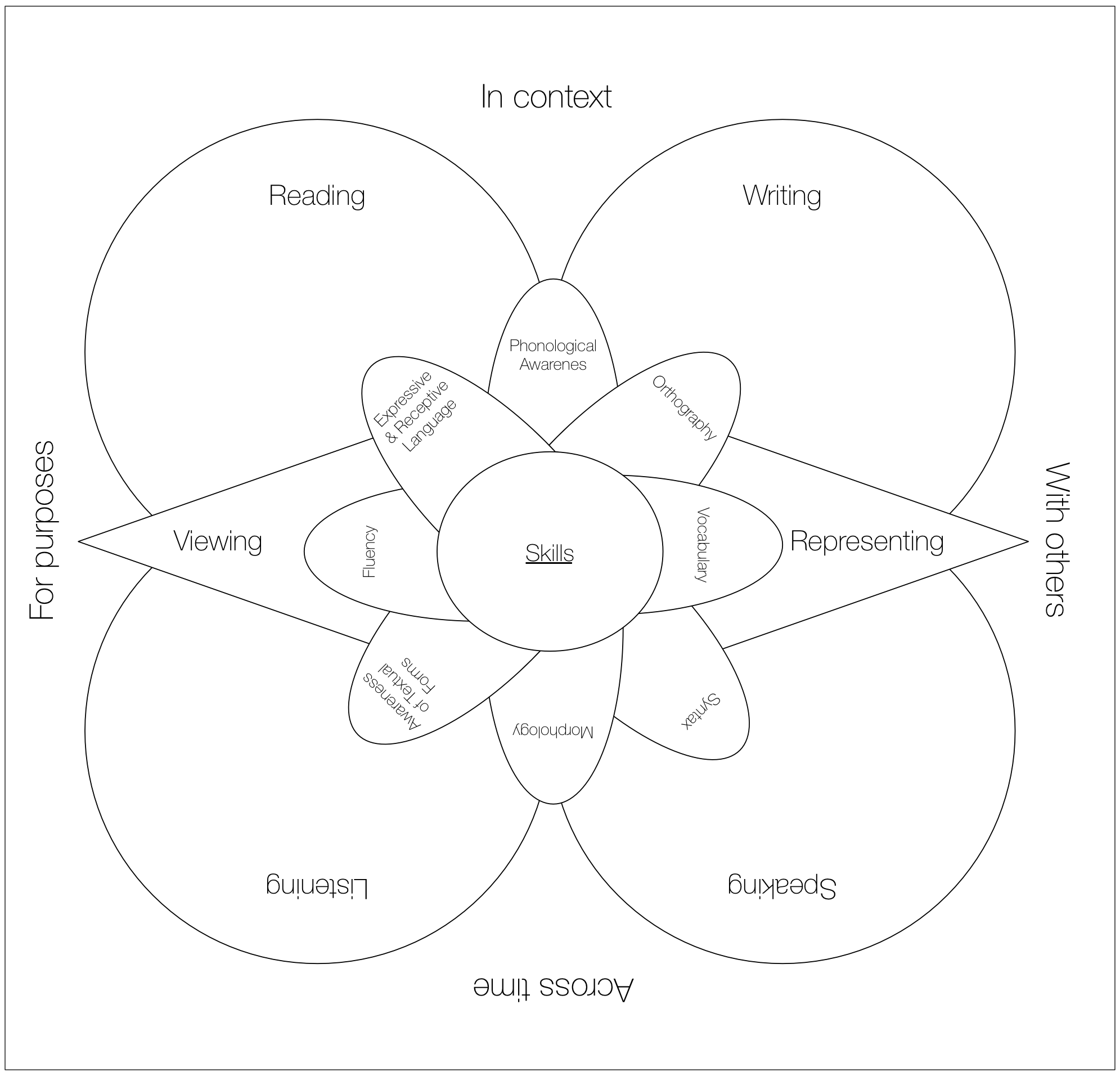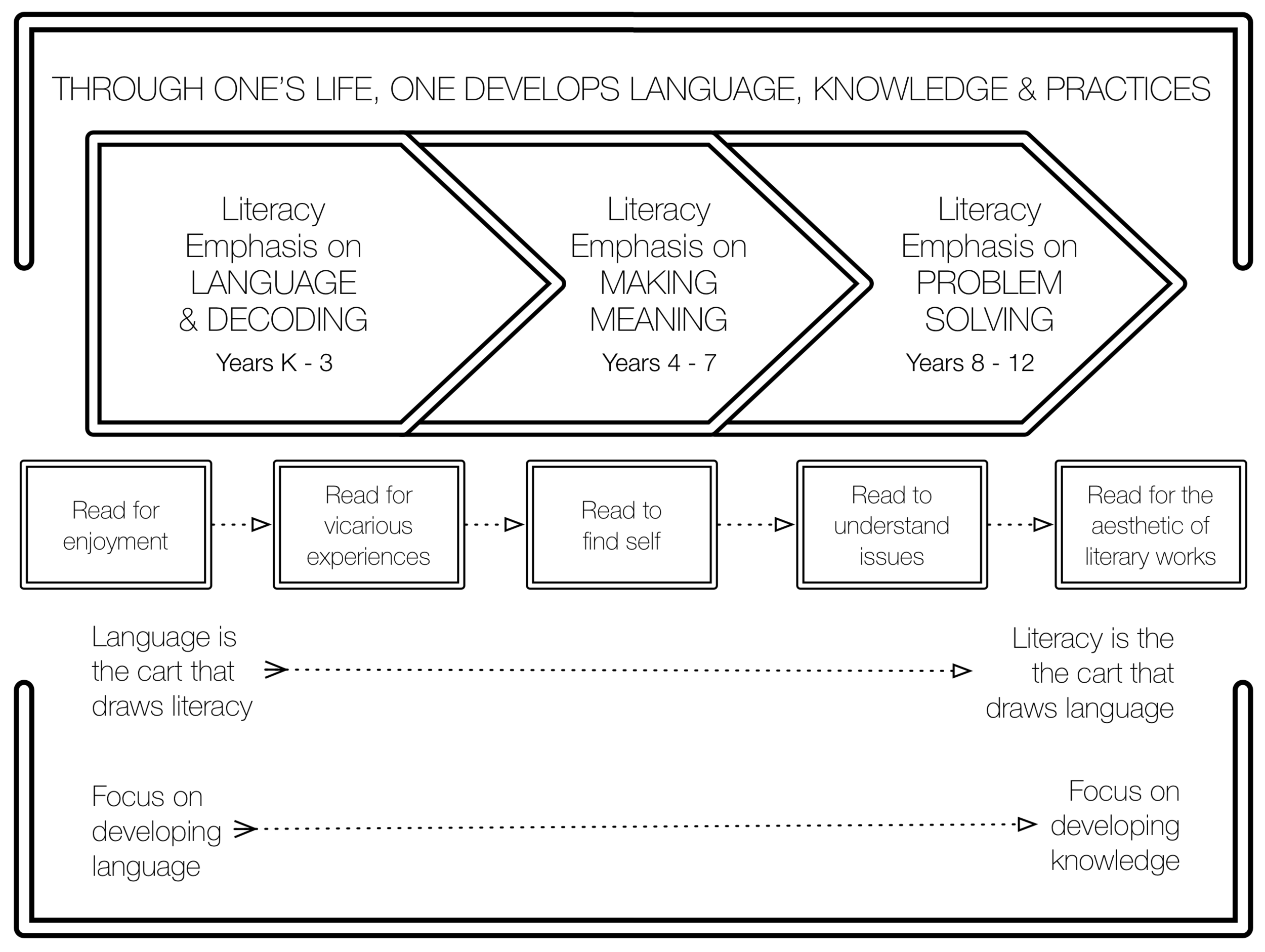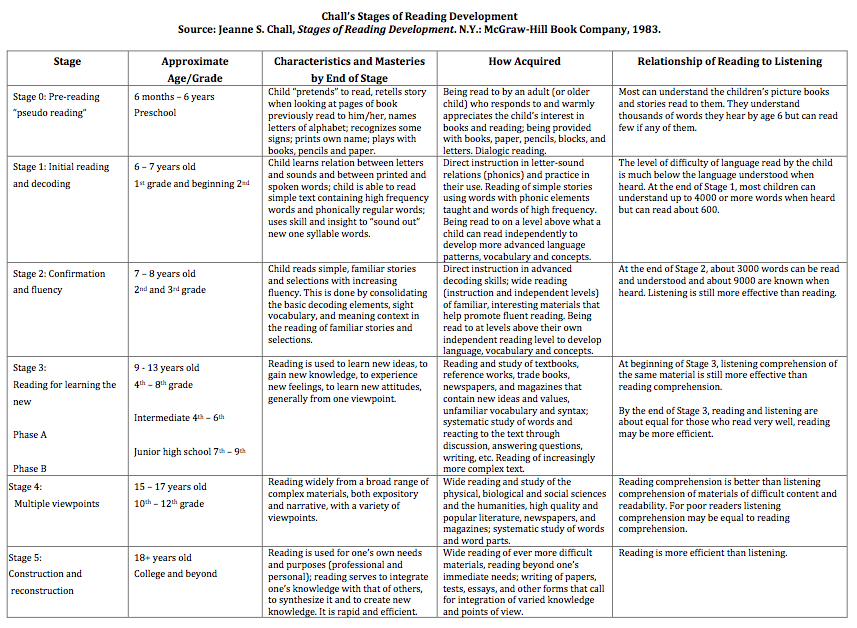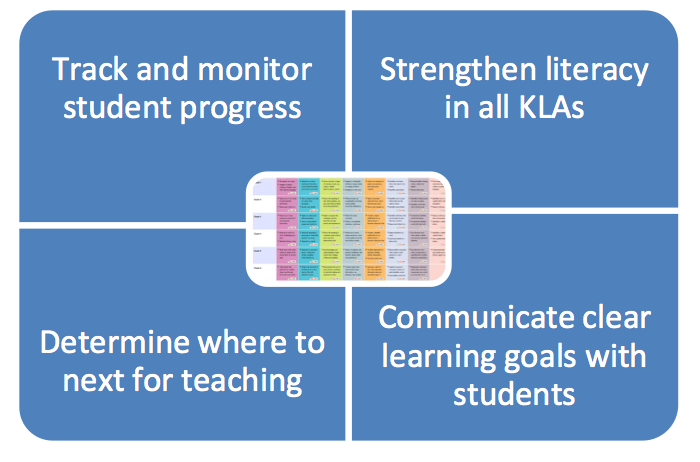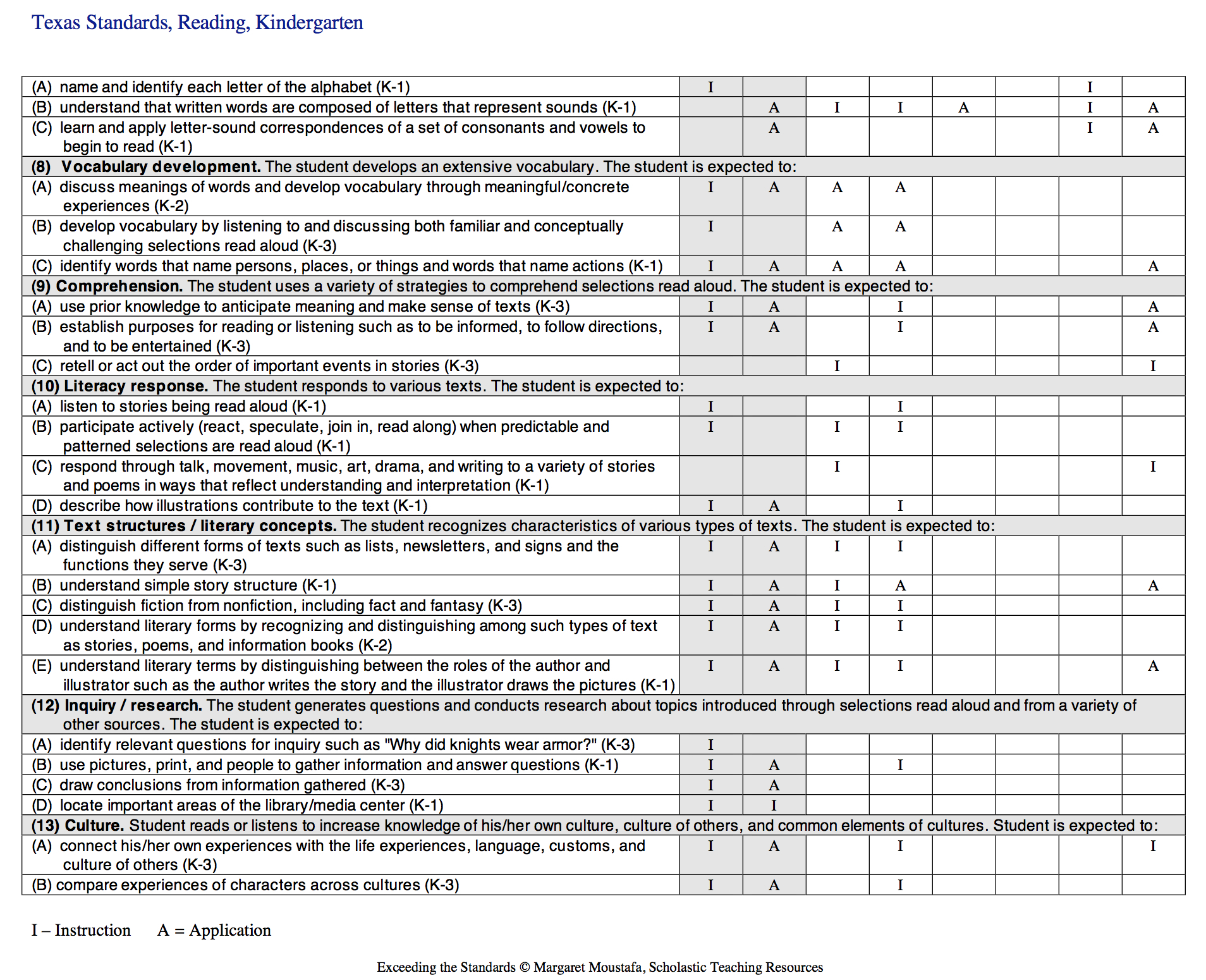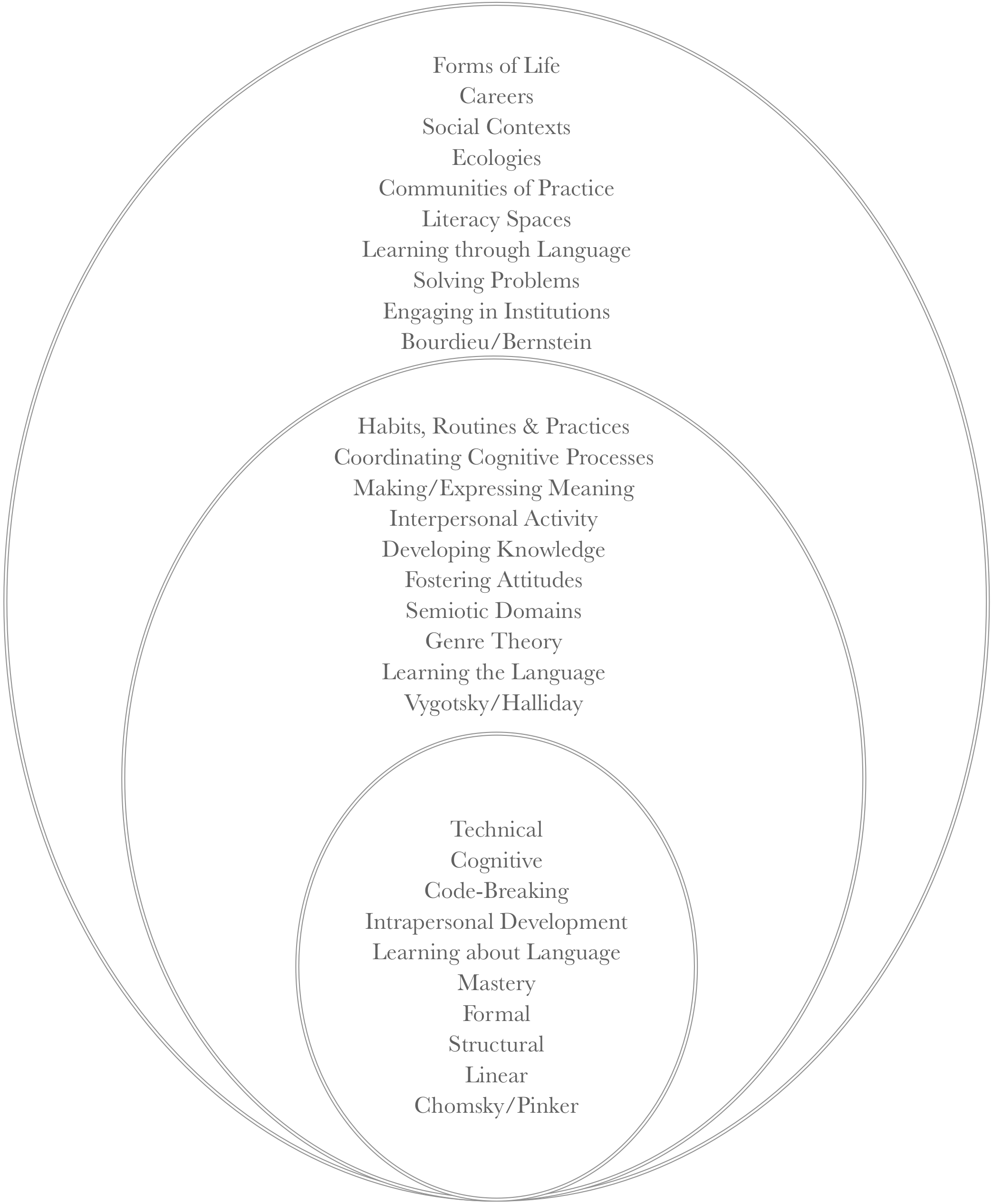Balancing Teaching
“In becoming literate, one must acquire skills that are only remotely related to print as well as those that are directly related ... [Therefore], we are not looking for a single variable that would differentiate ... better readers from ... poorer readers, nor for a single magic ingredient in the classrooms of children making the greatest gains in literacy skills. Literacy is too complicated a developmental domain to be susceptible to simple explanations.”
By recommending a balanced approach to literacy learning, we are not encouraging new-fangled approaches to literacy. We are not promoting a focus on one aspect of language and literacy learning over others. We are not encouraging the easy way out. Instead, we will encourage best practices. We will encourage the long, faithful journey, which is one that requires the patient and progressive development of skills, meanings, and uses. A balanced pedagogy is one that focuses on the development of speaking, listening, reading and writing skills that are integrated into thematic investigations and which are grounded in research-based understandings of language and literacy development (Tyner, 2012).
In a developmental perspective of language and literacy, we note how the learner passes "through successive stages of literacy, [and] in each [stage] the reading and writing tasks change qualitatively and the role of the instructor has to change accordingly." (Chall, 1996 as referenced in Snow, 2004) We will be encouraging the deployment of a comprehensive mixture of activities, and a balance of lessons that will change in emphasis as the learner develops. As the four images to the right suggest, this balance will include a focus on (a) oral language development, (b) progressive practice in reading and writing and (c) an emphasis on developing knowledge and fostering identities. To achieve this growth, instructors - including teachers, community members and loved ones - must ensure that learning occurs in supportive, safe environments free from discrimination with access to quality, culturally appropriate teaching, resources and practice.
The site will provide practical advice on orchestrating the following elements of balanced instruction: facilitating rich language experiences, fostering guided reading and writing, building vocabulary and word recognition skills, and enriching knowledge and identities. Even though the teaching ideas will provide technical advice, we also emphasise the importance of the social elements of learning, which are represented in the images to the left. From the social perspective, the learner is surrounded by others (family, a community, peers, a culture) who exert certain expectations through their own practices, knowledge, values and ways of navigating the spoken and written word. This active, social engagement requires adequate time and practice in order to transform one's capacity to see, use and conceptualise language in fluent and meaningful ways with others who can contextualise and extend understanding. As Rueda et al reminds us, "an engaged reader is one who is motivated, knowledgeable, strategic and socially interactive. The engaged reader is ... an active knowledge constructor, an effective user of cognitive strategies and a participant in social interactions.” (Rueda et al., 2001, p. 2).
Talk of best practices, teaching programs, cycles, and progressions can lull the casual observer into believing that programs on their own bring about results. A program's success is only as powerful as the vision and determination of the teacher delivering it and the learner engaging in it. We should not forget that learning is work, that skills and knowledge can and will be forgotten (if not reinforced), and that teachers, community members and learners need to wake up each morning to ponder yesterday and reach for the "living warm seed" of today's and tomorrow's and the next day's learning. Teachers must "understand literacy learning well enough to adapt the learning environment, materials, and methods to particular situations and students," which requires "a carefully orchestrated integration of skills and strategies, content, and literature ... [to] motivate and support individual students." (Gambrell, Malloy & Mazzoni, 2011, pg, 19). The images to the right and lower left both emphasise the need to establish learning routines that grow and adapt with the learners' developing skills, knowledge and interests.
The diagrams to the left/below specifically point to the levels of literacy activity that must be developed in tandem: constrained (core) skills, meaningful practices, disciplinary practices, and extended practices. This is consistent with Au's (2002) emphasis on local knowledge (code-breaking skills), global knowledge (comprehension/compositional skills) and affective knowledge (developing interests, affinities and attitudes). An image of an integrated approach to reading is presented in order to remind us that the balance/orchestration/integration of practices presents the greatest challenge for "teachers", whether we are referring to parents in the home or professionals in the classroom.
Perhaps contentiously, I will argue that a particular home environment provides a better avenue to explore how the multiple conceptions of literacy pedagogy can take shape (Heath, 1983). In some homes, one can imagine how bedtime reading, alphabetic flashcard practice, scaffolded writing instruction and language-in-context practice can occur with fairly fluid orchestration (which is reliant upon access to material and temporal resources). The adult has a regular routine of rich reading of favourite books (building vocabulary), time set aside to play with enticing alphabetic games (enhancing word recognition), time to write a birthday card to grandma (modelling of genre conventions), and an emphasis on language in the act of - for instance - baking a cake (learning vocabulary connected to valued activity). Each activity emphasises different aspects of language and literacy development within a social context. Each activity is integrated through the joint intentional activity of the adult & child. In this case, one can see how "a highly verbal and emotionally stable family environment greatly benefits vocabulary and reading." (Zhang et al, 2013, p. 665)
As reported by Gambrell, Malloy & Mazzoni (2011), "the goal of comprehensive literacy instruction is to ensure that all achieve their full literacy potential. This instruction should prepare our students to enter adulthood with the skills they will need to participate fully in a democratic society that is part of a global economy. Students need to be able to read and write with purpose, competence, ease and joy. Comprehensive literacy instruction emphasises the personal, intellectual and social nature of literacy learning." (pg 18). To contribute toward this aim, Gambrell, Malloy & Mazzoni (2011) identified ten features that comprehensive literacy instruction should include. Seven of the features are summarised below:
- Create a classroom culture that fosters literacy motivation: a highly engaging and motivating atmosphere where clear routines and enabling relationships provide opportunities for students to engage, practice, share and grow;
- Teach reading for authentic, meaning-making purposes (for pleasure, to be informed, to perform a task, etc): provide diverse reading opportunities that initiate students into a range of reading practices, including the imaginative, aesthetic, interpretative, informative, critical and functional.
- Provide students with scaffolded instruction in phonemic awareness, phonics, vocabulary, fluency and comprehension to promote individual reading: an environment in which (a) teachers provide ample opportunities for explicit instruction and practice in core skills and (b) both teachers and students can monitor and reflect upon progressive improvement.
- Give students time for self-selected independent reading: carve out the space and time so students can practice reading independently with a ready supply of age- and skill-appropriate reading materials (e.g. books and articles) that are of interest and of relevance.
- Use multiple texts that build on prior knowledge, link concepts, and expand vocabulary: reading material should be selected that can add to the knowledge that students are encountering in and out of the classroom. In this case, reading engagement should be purposeful and related to inquiry and discovery (e.g. explore a topic - like bullying - by integrating concepts explored in fiction, brochures, art and more).
- Balance teacher- and student-led discussion of texts: students are empowered when the reading comprehension process is made visible through discussions which are guided by clear yet flexible routines, and the reciprocal teaching method is a great tool to foster student-led discussions.
- Differentiate instruction using a variety of instructionally relevant assessments: deliver instruction that is within a student's zone of proximal development whilst also providing high challenge with high support. Catering for a diversity of needs is a challenge presented in the classroom, and it is a challenge that expert teachers accept and see as fundamental to the profession.
The imperative is to implement a balanced pedagogy that consolidates current skills whilst preparing learners for subsequent requirements by adopting best practice (Roskos, et al, 2009):
- Creating supportive instructional environments where time is used wisely.
- Attending to skills and strategies necessary for reading success, including decoding, vocabulary, and comprehension.
- Using scaffolded instruction to engage all learners in active learning. Instruction is structured so that learners “experience” a strategy or skill, much like a rehearsal as they (a) observe modeling by the teacher, (b) participate in guided practice, and (c) try out new strategies and skills on their own.
- Connecting literacy learning to disciplinary content. Students are taught to view reading as a tool for learning about their world.
- Acknowledging that oral language is the foundation of learning to read and write;
- Providing books and text that are plentiful and are varied in genre and form;
- Implementing an evidence-based curriculum that guides reading instruction and teachers are prepared to teach the reading program well;
- Adhering to an assessment system and treating evaluation as a tool for change; and
- Recognising how family and community involvement are integral early parts of early grades reading.
The significance of print and digital literacy should not be underestimated, since “achievement in handling the tools of reading and writing [and rending information] is obviously one of the most important axes of social differentiation in modern societies.” (Goody & Watt, 1963, p. 335) We should not forget, though, that literacy ultimately is mediated by the spoken word and relationships in context for purposes with others, such that “even within a literate culture, the oral tradition - the transmission of values and attitudes in face-to-face contact - nevertheless remains the primary mode of cultural orientation.” (Goody & Watt, 1963, p. 335). This face-to-face contact is reminiscent of the time-honoured concepts of apprenticeship and scaffolded practice in which learners are brought into the practices by those more experienced who initiate learners into their significance and who gradually release control as the apprentices gain further membership into the community of practice (Rogoff, 1990, 1995; Wells, 2004).
We hope this discussion provides the spirit in which you can approach the multiple dimensions of language and literacy development. We welcome you to explore the many areas of the site. We invite visitors to explore readings lists related to literacy development, each of the which focuses on a different component of literacy development, such as vocabulary development, fluency and decoding, guided reading and writing, oral language development, etc. And further advice is provided in relation to particular groups, such as adolescent learners and those learning English as an additional language. Even though there are various elements of literacy, we should never lose sight of the integrated picture; one in which learners are grappling with texts in the great hurly burly of life to explore, learn, express, participate, achieve and more. In the words of Gambrell, Malloy & Mazzoni (2011), we need to "ensure that all achieve their full literacy potential. This instruction should prepare our students to enter adulthood with the skills they will need to participate fully in a democratic society that is part of a global economy." (pg, 18)
Therefore, we should heed Catherine Snow’s advice, “in becoming literate, one must acquire skills that are only remotely related to print as well as those that are directly related.” (Snow et al, 1991). In other words, becoming literate involves general learning skills, language learning, experiential learning, imagining and visualising, learning to live and communicate communally and more. Please explore and enjoy. And while you are here, take the time to watch some or all of the videos to the upper left. They has been chosen as they represent different dimensions and viewpoints of language and literacy.
Footnote
[1] Literacy is an assumed part of the lives of many of those living in urban and semi-urban areas of the developed world. It is important to remember that there are significant parts of the world in which literacy is not a part of daily life or is only just emerging, which presents its own politics between traditional and modern practices.
Reference (back to top)
Au, K. (1998). Social constructivism and the school literacy learning of students of diverse backgrounds. Journal of Literacy Research, 30(2), 297–319. doi:10.1080/10862969809548000
Au, K (2002). Balanced Literacy Instruction: Addressing Issues of Equity. In C. M. Roller (Ed.), Comprehensive Reading Instruction Across the Grade Levels: A Collection of Papers from the Reading Research 2001 Conference (pp. 70–87). International Reading Association.
Au, K. H.-P., & Mason, J. M. (1981). Social Organizational Factors in Learning to Read: The Balance of Rights Hypothesis. Reading Research Quarterly, 17(1), 115. doi:10.2307/747251
Brown-Jeffy, S., & Cooper, J. E. (2011). Toward a Conceptual Framework of Culturally Relevant Pedagogy: An Overview of the Conceptual and Theoretical Literature. Teacher Education Quarterly, 38(1), 65–84.
Cavell, S. (2005). Philosophy the day after tomorrow. In Philosophy the day after tomorrow (pp. 111 – 131). Cambridge, MA: Belknap Press.
Chall, J. S. (1996). Stages of reading development (2nd ed.). Fort Worth: Harcourt Brace Jovanovic College Publishers.
Gambrell, L. B., Malloy, J. A., & Mazzoni, S. A. (2011). Evidence-based best practices in comprehensive literacy instruction. In L. M. Morrow & L. B. Gambrell (Eds.), Best practices in literacy instruction (4th ed.). New York: Guilford Press.
Gandz, S. (1935) "Oral Tradition in the Bible" in Jewish Studies in Memory of George A. Kohut. ed. Salo W. Baron and Alexander Marx. New York.
Geekie, P., Cambourne, B., & Fitzsimmons, P. (2004). Learning as puzzle solving. In T. Grainger (Ed.), The RoutledgeFalmer reader in language and literacy (pp. 107–118). London: Routledge Falmer.
Gibson, J. J. (1977). The theory of affordances. In R. Shaw & J. Bransford (Eds.), Perceiving, acting, and knowing: Toward an ecological psychology (pp. 67 – 82). Hillsdale, NJ: Lawrence Erlbaum Associates.
Gibson, J. J. (1979). The ecological approach to visual perception. Boston: Houghton Miflin.
Goody, J., & Watt, I. (1963). The Consequences of Literacy. Comparative Studies in Society and History, 5(03), 304–345.
Heath, S. B. (1983). Ways with words: language, life and work in communities and classrooms. Cambridge: Cambridge University Press.
McKenna, M. C., & Stahl, K. A. D. (2012). Assessment for reading instruction. 2nd Edition. Guilford Press.
Moustafa, M. (2008). Exceeding the standards: a strategic approach to linking state standards to best practices in reading and writing instruction. New York: Scholastic.
Moyal-Sharrock, D. (2010). Coming to Language: Wittgenstein’s Social “Theory” of Language Acquisition. In SOL Conference 6-8 May 2010. Bucharest.
NSW Department of Education and Communities. (2011). NSW Literacy Continuum. NSW Department of Education and Training. Retrieved July 26, 2014, from http://www.curriculumsupport.education.nsw.gov.au/literacy/
Rogoff, B. (1990). Apprenticeship in thinking: cognitive development in social context. New York: Oxford University Press.
Rogoff, B. (1995). Observing sociocultural activity on three planes: participatory appropriation, guided participation, and apprenticeship. In J. Wertsch, P. Del Rio, & A. Alvarez (Eds.), Sociocultural studies of mind (pp. 139 – 164). Cambridge University Press.
Rose, D., & Martin, J. R. (2012a). Reading to Learn. In Learning to Write/Read to Learn: Genre, Knowledge and Pedagogy in the Sydney School (pp. 133–234). Sheffield: Equinox Publishing.
Rose, D., & Martin, J. R. (2012b). Write it Right/the Right to Write. In Learning to Write/Read to Learn: Genre, Knowledge and Pedagogy in the Sydney School (pp. 84–132). Sheffield: Equinox Publishing.
Roskos, K., Strickland, D., Haase, J., & Malik, S. (2009). First Principles for Early Grades Reading Programs in Developing Countries.
Rueda, R., MacGillivray, L., Monzó, L., & Arzubiaga, A. (2000). Engaged reading: a multilevel approach to considering sociocultural factors with diverse learners. In Research on Sociocultural Influences on Motivation and Learning, Volume 1 (pp. 233 – 264).
Snow, C. (2004). What counts as literacy in early childhood? In K. McCartney & D. Phillips (Eds.), Handbook of early child development. Oxford, UK: Blackwell Publishers.
Snow, C. E., Barnes, W. S., Chandler, J., Goodman, I. F., & Hemphill, L. (1991). Unfulfilled expectations: home and school influences on literacy. Cambridge, MA: Harvard University Press.
Tyner, B. (2012). The literacy jigsaw puzzle: assembling the critical pieces of literacy instruction. Newark, DE: International Reading Association.
Wells, G. (2004). The Role of Activity in Development and Education. Infancia Y Aprendizaje, 27(2).
Wolf, M. (2008). Proust and the squid: the story and science of the reading brain. Cambridge: Icon Books.
Wolf, M., Ullman-Shade, C., & Gottwald, S. (2012). The Emerging, Evolving Reading Brain in a Digital Culture: Implications for New Readers, Children With Reading Difficulties, and Children Without Schools. Journal of Cognitive Education and Psychology, 11(3), 230–240. doi:10.1891/1945-8959.11.3.230
Zhang, Y., Tardif, T., Shu, H., Li, H., Liu, H., McBride-Chang, C., … Zhang, Z. (2013). Phonological skills and vocabulary knowledge mediate socioeconomic status effects in predicting reading outcomes for Chinese children. Developmental Psychology, 49(4), 665–71. doi:10.1037/a0028612

